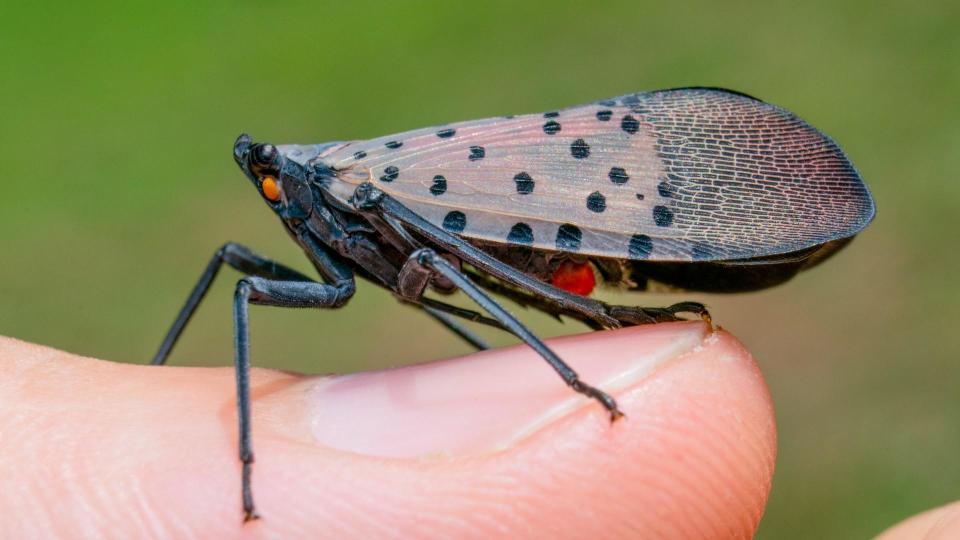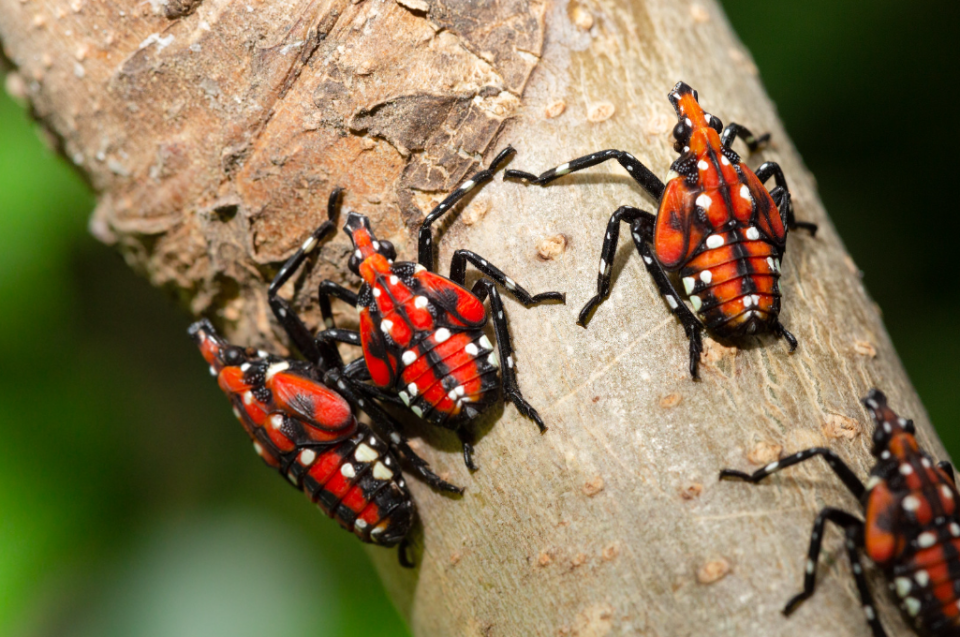Scrub Hub: What is a spotted lanternfly? And how can you help stop the invasive insect?
Editor's note: This story was originally published in March. We are republishing it as the lanternfly lays eggs in the fall and the adults are more prevalent.
With the return of robins, daffodils and other idyllic signs of spring come unwanted visitors known as invasive species.
A relatively new addition to the not-welcome list Hoosiers should watch for is the spotted lanternfly. Discovered in the U.S. around 2014, the conspicuous planthopper was first found in Indiana in 2021. Since then, it has spread north from Switzerland County all the way to Huntington County.
Stopping the spotted lanternfly
Invasive species damage native plants and create economic burdens for farmers. So, for this edition of Scrub Hub, we spoke with an expert at the U.S. Department of Agriculture to answer: How can Hoosiers stop the spread of the spotted lanternfly?
Short answer: Show them your bootheel
Spotted lanternflies are robust feeders that prefer a good soft spot on leaves to suck out sap. This causes oozing wounds that lead to wilting leaves and dead branches.
Matt Travis is the Spotted Lanternfly National Policy Manager for the USDA’s Animal and Plant Health Inspection Service’s Plant Protection and Quarantine program. That's a mouthful, but basically he’s the country’s preeminent spotted lanternfly expert.
Travis said the pests likely arrived in the U.S. through eggs attached to imported cargo such as stone hardscape materials and landscaping tile.

Previously on Scrub Hub Animals are dying on Indiana roads. Could wildlife crossings help?
The adults are easily identified with bright orangish-red colored wings and, as the name implies, dark spots.
If you see a spotted lanternfly, it’s important to contact the Indiana Department of Natural Resources. Send along a picture if possible.
“Reporting is key, but once you get confirmation, especially adults, stomp it out,” Travis said. “If it’s an egg mass and you get confirmation, scrape it off and stomp the egg mass.”

Long answer: Keep an eye out for evidence
Travis encouraged Hoosiers heading outdoors to look for spotted lanternflies.
“Everyone doing their part," he said, "really makes a difference.”
The species is known to destroy grape and hops crops, hardwood trees and different fruit and vegetable plants.
“This really is a stressor to a lot of plants,” Travis said. He added the impact grows worse when plants are dealing with heat or drought or other climate issues.
The spotted lanternfly has four life stages: egg mass, early-stage nymph, late-stage nymph and adult. The nymphs can look like other insects in Indiana, so it’s a bit easier to identify the eggs and adults.
The species prefers to reside and lay eggs on another invasive species called the Tree of Heaven. Travis said they can live on red maples and black walnuts, too, just not as robustly.

Adult spotted lanternflies can often be found crawling up vertical structures, too, so Travis said to check sides of buildings, telephone poles and light posts. They sometimes lay eggs above the normal eye line on structures and in trees.
“These are not dangerous to humans," he said, "and don’t sting or bite.”
The Scrub Hub: Your questions. Our answers.
Do you have questions about the environment? IndyStar environmental reporters Sarah Bowman and London Gibson want to hear from you.
To report a spotted lanternfly in Indiana, call 866-NO EXOTIC (866-663-9684) or send an email to DEPP@dnr.in.gov. Leave your name, contact number and as many details as you can about the sighting as well as any photos you’re able to capture.
Karl Schneider is an IndyStar environment reporter. You can reach him at karl.schneider@indystar.com. Follow him on Twitter @karlstartswithk
IndyStar's environmental reporting project is made possible through the generous support of the nonprofit Nina Mason Pulliam Charitable Trust.
This article originally appeared on Indianapolis Star: Scrub Hub: How can Hoosiers stop the invasive spotted lanternfly?

